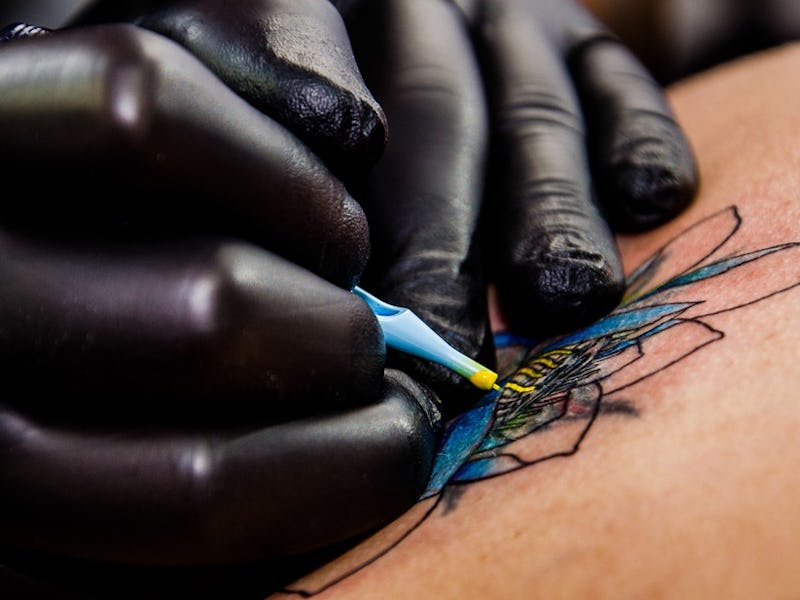New "Biosensitive" Tattoo Ink Can Read What's in Your Blood
Biosensor tattoos are the less dorky future of smart wearables.

Thanks to wearable technology, you can go for a run and a fitness tracker will tell you how long you’ve exercised, your heart rate, and how many calories you’ve probably burned. That’s cool, sure, but there’s only so much it can tell you. Sitting on the surface of your skin, your Apple watch can’t analyze your metabolism, your dehydration levels, or your dwindling blood sugar levels. And to be honest, it makes you look like a dork.
How can you look like a badass and monitor your health? Harvard and Massachusetts Institute of Technology recently announced a solution: Cover your body in biosensor tattoos, baby.
The researchers developed proof-of-concept tattoos using special ink that they claim can monitor health by changing colors. These biosensitive inks are described in a new paper, published as part of the Proceedings of the 2017 ACM International Symposium on Wearable Computers, under the deeply metal title “The Dermal Abyss.”
“This work could be expanded to monitor athletes and their health levels, people who have chronic conditions that need to be monitored like diabetes, and it could even be used on astronauts to monitor their health in space,” study co-author Nan Jiang, M.D. tells Inverse.
She says that the collaborative research teams that worked on this project were excited by the idea of combining something artistic, like tattoos, with a “very hot topic” like wearable technology.
The experiment was conducted on pig skin.
These tattoos are pretty much like regular tattoos, except that the traditional inks are replaced with fluids containing colorimetric and fluorescent biosensors capable of detecting concentrated amounts of sodium, glucose, and hydrogen ions (to measure pH) in the interstitial fluid of the skin. So far, they’ve developed an ink that transitions from green to brown when glucose concentration increases as well as a green ink that becomes more vivid under blue light when sodium concentration rises. If this green ink turned a brighter shade on a human, it would mean the person is dehydrated.
The ink becomes more vivid under a blue light.
The researchers also have good news for people who want to monitor their health with a tattoo but don’t want to commit to visible ink on their skin. In an interview with the Harvard Gazette, study co-author and Harvard researcher Ali Yetisen said he imagines invisible ink could eventually be used as well, if viewed under the right kind of light — which could very well be beamed from your smart phone.
However, we’re still some time away from living in a “dermal abyss”, Jiang says. Since the research has so far only been tested on pig skin, it’s considered only a proof of concept for now. When it’s eventually tested on humans, Jiang says, the trick will be getting the ink to completely stick to skin. As of now, there’s still a risk of the ink diffusing into surrounding areas.
Still, the biosensitive tattoos predict an exciting future where people have a more active role — and a more direct window — in monitoring their body.
“In the same way that the wearables industry is integrating fashion practices into their development,” the researchers say in a video about their work, “we envision new participation between the biotech companies and skin professionals.”
If you liked this article, check out this video on why tattoos are more likely to attract men than women.